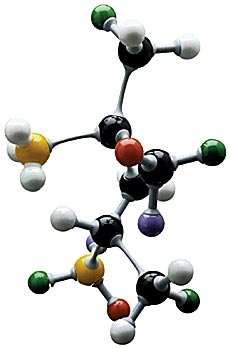MEMBRANES, MOLECULES AND THE SCIENCE OF PERMEATION
The term "vehicle refueling vapors" refers to the vapors displaced from the vehicle fuel tank during refueling. Storage tank evaporative vapors, on the other hand, are vapors that are created as gasoline undergoes a change from liquid phase to vapor phase. This change must occur to re-establish an equilibrium vapor concentration in the space above the liquid in fixed roof storage tanks (USTs or ASTs). The vapor space concentration is driven below natural levels by the ingestion of lean vapors or air into the storage tank during vehicle refueling. If the natural equilibrium vapor concentration is momentarily reduced, liquid gasoline will evaporate until the equilibrium concentration level is re-attained. One gallon of liquid gasoline will expand to approximately 520 gallons of vapor at 40 percent hydrocarbon concentration. Therefore, storage tank pressure will increase rapidly as relatively small amounts of liquid evaporate. This increased pressure can result in vapor emissions from pressure/vacuum relief valves or through any leaks in the vapor piping. What goes in must come outAny refueling scenario, with or without ORVR or Stage II systems, which introduces lean vapors or air into gasoline storage tanks will result in the creation of evaporative vapors, as discussed above. The subsequent emission of the evaporative vapors compromises the overall efficiency of whatever vapor recovery systems are used. The four possible refueling scenarios are as follows:
Where vacuum-assisted Stage II systems are employed, the storage tanks will be backfilled with atmospheric air at a volume greater than the volume of liquid dispensed. In these cases, the combination of excess gaseous volume and extremely low hydrocarbon concentration will result in rapid storage tank pressurization and subsequent emissions. These emissions come through either the vent pipes (vent emissions) or leaks in the vapor piping (fugitive emissions). If the vacuum-assisted systems are disabled during refueling of ORVR-equipped vehicles, the resulting storage tank evaporative losses will be equivalent to those generated at uncontrolled dispensing facilities. This must be the case, since the air ingestion volume will be equal to the volume of liquid dispensed. If balance Stage II systems are used, the storage tank evaporative losses will be equivalent to those generated at uncontrolled stations. This, again, is because the air ingestion volume will equal the volume of liquid dispensed. In summary, no matter what the scenario, the space vacated by pumping gasoline out of the storage tank is replaced by air or hydrocarbons that are equivalent at least to the volume of liquid displaced. In some cases involving Stage II systems and ORVR, the volume of air ingested is greater than the volume of liquid displaced. Membranes article continued |
video-flash-img-content






